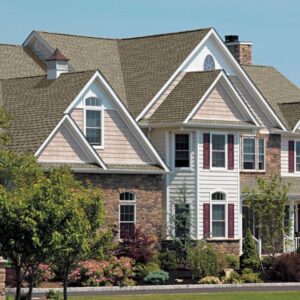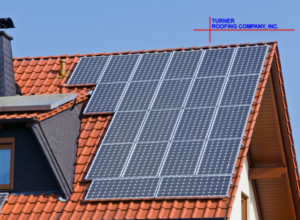Introduction: The Significance of Selecting the Right Roofing Material
- Establish the importance of choosing suitable roofing materials that align with a home’s aesthetics, longevity, and energy efficiency.
- Introduce the concept of evaluating different roofing materials to empower homeowners with informed decision-making.
1. Asphalt Shingles: The Standard Choice
Benefits:
- Easily accessible and cost-effective.
- Simplified installation and repair processes.
- Diverse range of colors and styles available.
Drawbacks:
- Relatively moderate lifespan compared to alternative options.
- Prone to damage from weather and temperature fluctuations.
- Environmental concerns surrounding disposal.
2. Metal Roofing: Combining Strength and Sustainability
Benefits:
- Remarkable durability and extended lifespan.
- Exceptional resistance to weather, fire, and pests.
- Reflective properties contribute to energy efficiency.
Drawbacks:
- Initial investment can be higher.
- Professional installation required for optimal results.
- Audible noise during intense rainfall or hail.
3. Clay or Concrete Tiles: Aesthetic Appeal with Endurance
Benefits:
- Unique and visually appealing appearance.
- Longevity and minimal maintenance needs.
- High fire resistance and thermal insulation properties.
Drawbacks:
- Weight necessitates additional structural support.
- Susceptible to cracking upon impact.
- Elevated installation expenses.
4. Wood Shakes or Shingles: Embracing Natural Charm
Benefits:
- Organic, rustic look.
- Effective insulation attributes.
- Feasible individual repair in case of damage.
Drawbacks:
- Vulnerability to rot, pests, and mold.
- Ongoing upkeep and treatment requirements.
- Fire hazard unless treated for fire resistance.
5. Slate Roofing: Timeless Elegance and Longevity
Benefits:
- Unparalleled sophistication and extended lifespan.
- Inherent resistance to fire, pests, and mold.
- Ideal water resistance for colder climates.
Drawbacks:
- Weight demands robust structural reinforcement.
- Elevated overall costs, including installation and upkeep.
- Limited availability of skilled installation professionals.
6. Synthetic Roofing Materials: Affordability and Imitation
Benefits:
- Economical replication of natural materials.
- Lightweight composition facilitates straightforward installation.
- Enduring and low-maintenance properties.
Drawbacks:
- Quality disparities exist among different brands.
- Longevity might not match that of authentic materials.
- Some synthetic materials offer restricted color choices.
Conclusion: Guiding Your Ideal Roofing Selection
- Recap the pivotal advantages and drawbacks of each roofing material.
- Stress the significance of considering variables like budget, climate, aesthetics, and maintenance in the decision-making process.
- Urge readers to engage with professional consultants for personalized guidance.
By tailoring the blog post’s content to a home improvement and construction consultancy, you’re providing valuable insights to homeowners seeking guidance on selecting the best roofing material to enhance their homes.






